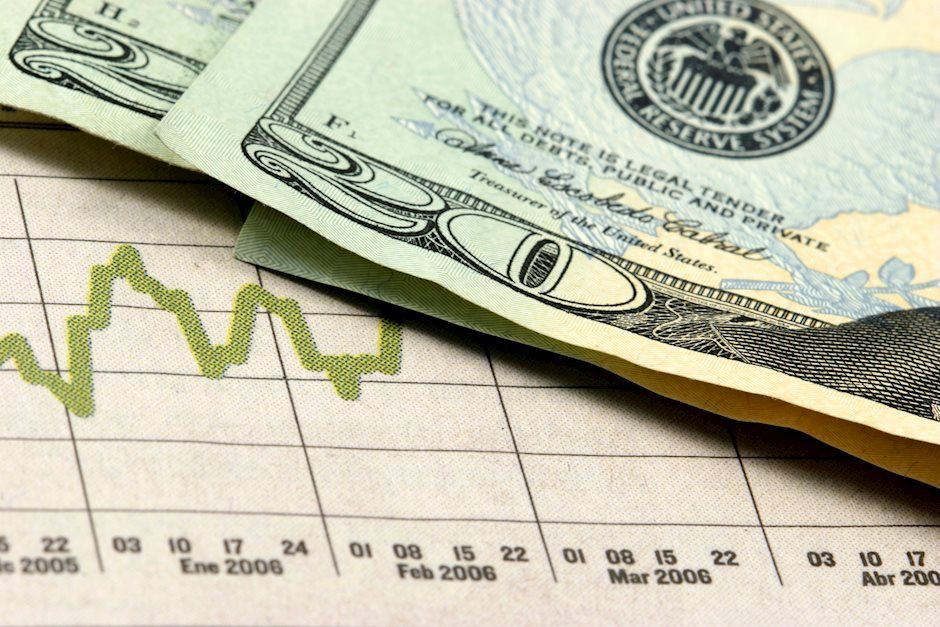US Dollar Index edges lower to near 104.20 after mix US PCE Inflation release
- The US Dollar drops as steady US core PCE inflation growth appears insufficient to impact firm Fed rate-cut bets.
- The Fed is widely anticipated to leave interest rates unchanged next week.
- Fed officials’ confidence over inflation returning to 2% path has improved.

The US Dollar Index (DXY) falls slightly to near 104.20 in Friday’s New York session after the United States (US) Bureau of Economic Analysis (BEA) published the Personal Consumption Expenditure Price Index (PCE) report for June. 10-year US Treasury yields tumble to 4.20%.
The report showed that annual core PCE, which excludes volatile food and energy items, grew steadily by 2.6%, while economists anticipated a deceleration to 2.5%. The month-on-month core PCE inflation rose at a higher pace of 0.2% from expectations and the former release of 0.1%. Though the core PCE data, which is a Federal Reserve’s (Fed) preferred inflation gauge, turned out sticky, it is insufficient to dampen market expectations that the central bank will start reducing interest rates from the September meeting and will cut them twice this year.
Meanwhile, annual PCE inflation decelerated expectedly to 2.5% from the former release of 2.6%.
Going forward, the next trigger for the US Dollar will be the Fed’s monetary policy meeting, which is scheduled for Wednesday. The Fed is widely anticipated to keep interest rates at their current levels. Investors will look cues for whether the Fed has confidence in current rate-cut speculation.
Fed policymakers have acknowledged that price pressures have returned to their path towards bank’s target of 2%. Their confidence in resumption in the disinflation process scaled after back-to-back decline in the Consumer Price Index (CPI) reports for last two months. However, officials hesitate to endorse rate cuts as the battle against stubborn inflation is far from over.
US Dollar FAQs
The US Dollar (USD) is the official currency of the United States of America, and the ‘de facto’ currency of a significant number of other countries where it is found in circulation alongside local notes. It is the most heavily traded currency in the world, accounting for over 88% of all global foreign exchange turnover, or an average of $6.6 trillion in transactions per day, according to data from 2022. Following the second world war, the USD took over from the British Pound as the world’s reserve currency. For most of its history, the US Dollar was backed by Gold, until the Bretton Woods Agreement in 1971 when the Gold Standard went away.
The most important single factor impacting on the value of the US Dollar is monetary policy, which is shaped by the Federal Reserve (Fed). The Fed has two mandates: to achieve price stability (control inflation) and foster full employment. Its primary tool to achieve these two goals is by adjusting interest rates. When prices are rising too quickly and inflation is above the Fed’s 2% target, the Fed will raise rates, which helps the USD value. When inflation falls below 2% or the Unemployment Rate is too high, the Fed may lower interest rates, which weighs on the Greenback.
In extreme situations, the Federal Reserve can also print more Dollars and enact quantitative easing (QE). QE is the process by which the Fed substantially increases the flow of credit in a stuck financial system. It is a non-standard policy measure used when credit has dried up because banks will not lend to each other (out of the fear of counterparty default). It is a last resort when simply lowering interest rates is unlikely to achieve the necessary result. It was the Fed’s weapon of choice to combat the credit crunch that occurred during the Great Financial Crisis in 2008. It involves the Fed printing more Dollars and using them to buy US government bonds predominantly from financial institutions. QE usually leads to a weaker US Dollar.
Quantitative tightening (QT) is the reverse process whereby the Federal Reserve stops buying bonds from financial institutions and does not reinvest the principal from the bonds it holds maturing in new purchases. It is usually positive for the US Dollar.
Author

Sagar Dua
FXStreet
Sagar Dua is associated with the financial markets from his college days. Along with pursuing post-graduation in Commerce in 2014, he started his markets training with chart analysis.

















